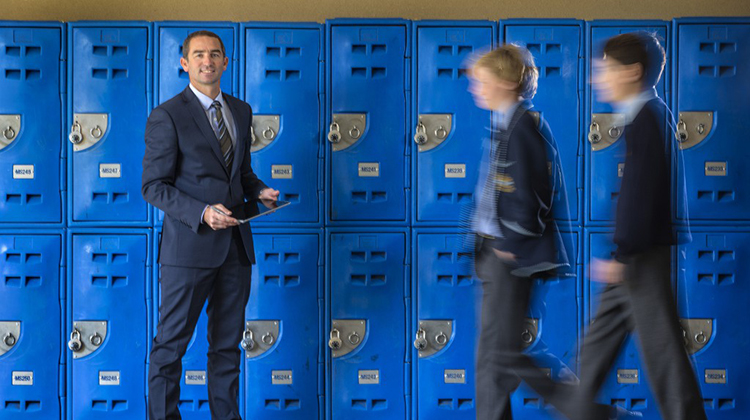Technology drives Hale School’s integrity

The boys at Perth’s Hale School are accustomed to graduating on into university so while at high school they get an early introduction to how things are done at a tertiary level.
Plagiarism, buying work or having others do your work is not on and university standard software has been rolled out to make sure it doesn’t happen.
Starting in Year 5 when the students are about 10, work is checked and vetted using Turnitin’s software, the very same process that is used at RMIT, Macquarie or Curtin University, to ensure that the work students are handing in is their own.
Hale School introduced Microsoft Surface devices in 2007 and the school is invested in Microsoft learning technology, there’s no LMS to speak of as the school doesn’t want to restrict their teachers’ approach.
“The School leadership is mindful not to narrow the curriculum delivery options available to teachers,” says Rob Barugh, Director of Learning Technologies.
“70 per cent of our curriculum delivery is through OneNote, I would classify that as an open ecosystem, a fairly blank canvas where you can create your own content. We don’t want to pigeon hole the teachers.
The school has settled on the Office 365 ecosystem, making significant use of Microsoft OneNote and Teams in recent years. Turnitin is now fully embedded within that environment.
Initially, Hale School was looking to give the boys in Years 11 and 12 the experience of university level scrutiny by introducing Turnitin.
“We wanted to show them that you are going to be held to this level of account when you are producing original work. That’s where it started 10 years ago so we’ve been using Turnitin a long, long time.
“Then we started pushing it down to the lower years and that was a more educative, formative process where they would submit work, realise it was quite plagiarised and then have an opportunity to put through a second draft, a third draft and then a final draft. There are a lot of nuances in the middle school to having them realise what original compositions are.
“Most of our teaching is within that Office 365 ecosystem and, particularly, we are starting to gear up with Microsoft Teams, Microsoft Forms and OneNote, so to have Turnitin embedded directly in the Microsoft Teams environment where all the assignment submissions were happening just made it very easy.
“It’s a very low impact to adoption, removing any hurdles that we have to teachers falling into its use. Teams has an efficient assignment submission capability and having that one toggle switch to turn on plagiarism checking is an absolute breeze.
“Integrity is part of our core value system, having it front and centre when students are producing and submitting work, having it ready for teachers to put into play means the students are more aware of the importance of original work, deeper knowledge and deeper thinking,” Barugh says.
Cut and paste does not an education make, and the software makes that very tough to do, in research conducted by Deakin University, markers working with the software were able to accurately identify three out of five cases of contract cheating.
Brenton Wyett, New Business Manager at Turnitin says, “Over the last few months, we’ve seen a significant uptake on the integration in Australia and New Zealand, with over 50 schools now using or testing the tool in classrooms. The feedback we’ve received from teachers is that they like how the integration creates an iterative learning process for students when completing assignments.
“Students can run their rough drafts through the similarity tool on Teams and check if words or sentences need to be corrected or reworded to ensure it’s their original work. This not only saves teachers time in grading and enables them to focus on value-add opportunities, but it supports students to become more actively involved and take more responsibility for their own learning.
“As a result, we’re seeing the conversation shift from a focus on plagiarism to how schools can create teaching environments that enables students to become active, collaborative and engaged in their learning.”